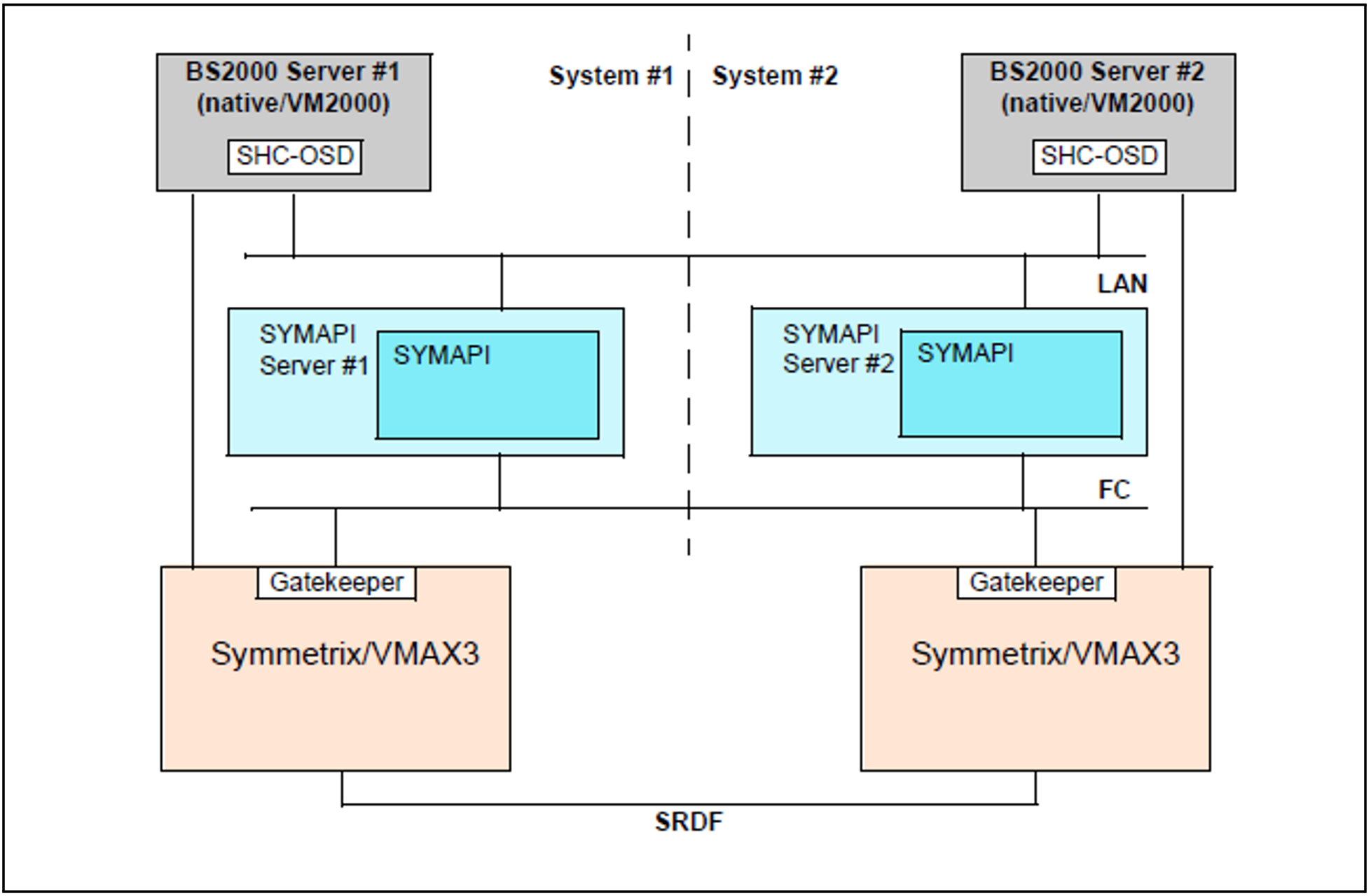You can also install SYMAPI on multiple SYMAPI servers, define these in the SHC-OSD parameter file, and use them dynamically in rotation.
This is particularly important when stringent requirements are made for availability (High Availability, HA) or for configurations for disaster recovery (DR).
Figure 7: Two SYMAPI servers in an HA configuration
However, only one of the defined SYMAPI servers is ever active. When it starts, SHC-OSD activates the first SYMAPI server defined in the SHC-OSD parameter file which is in the OK status (SYMAPI server is running). Information on the active SYMAPI server can be obtained with the /SHOW-SHC-ENVIRONMENT INFORMATION=*STD command.
Information on all SYMAPI servers defined in the SHC-OSD parameter file can be obtained with the /SHOW-SHC-PROCESSING and /SHOW-SHC-ENVIRONMENT INFORMATION=*ALL commands.
The active SYMAPI server can be switched over automatically or manually during ongoing SHC-OSD operation:
Automatic switchover
SHC-OSD detects that the active SYMAPI server has crashed when the active SYMAPI server fails to respond to either the regular polling (default interval: 10 min.) or to an SHC-OSD command.
In this case SHC-OSD switches to the first available SYMAPI server from the list of defined SYMAPI servers in the SHC-OSD parameter file.
The switchover of the SYMAPI server is logged on the console with the messages
NDE1836(SYMAPI server no longer connected) andNDE1835(Storman server connected). MessageNDE1736must be confirmed by the operator.Manual switchover by command
The
/MODIFY-SHC-ENVIRONMENTcommand enables you to switch over to any active SYMAPI server contained in the list of defined SYMAPI servers in the SHC-OSD parameter file during ongoing SHC-OSD operation.The switchover can also take place from a procedure.

